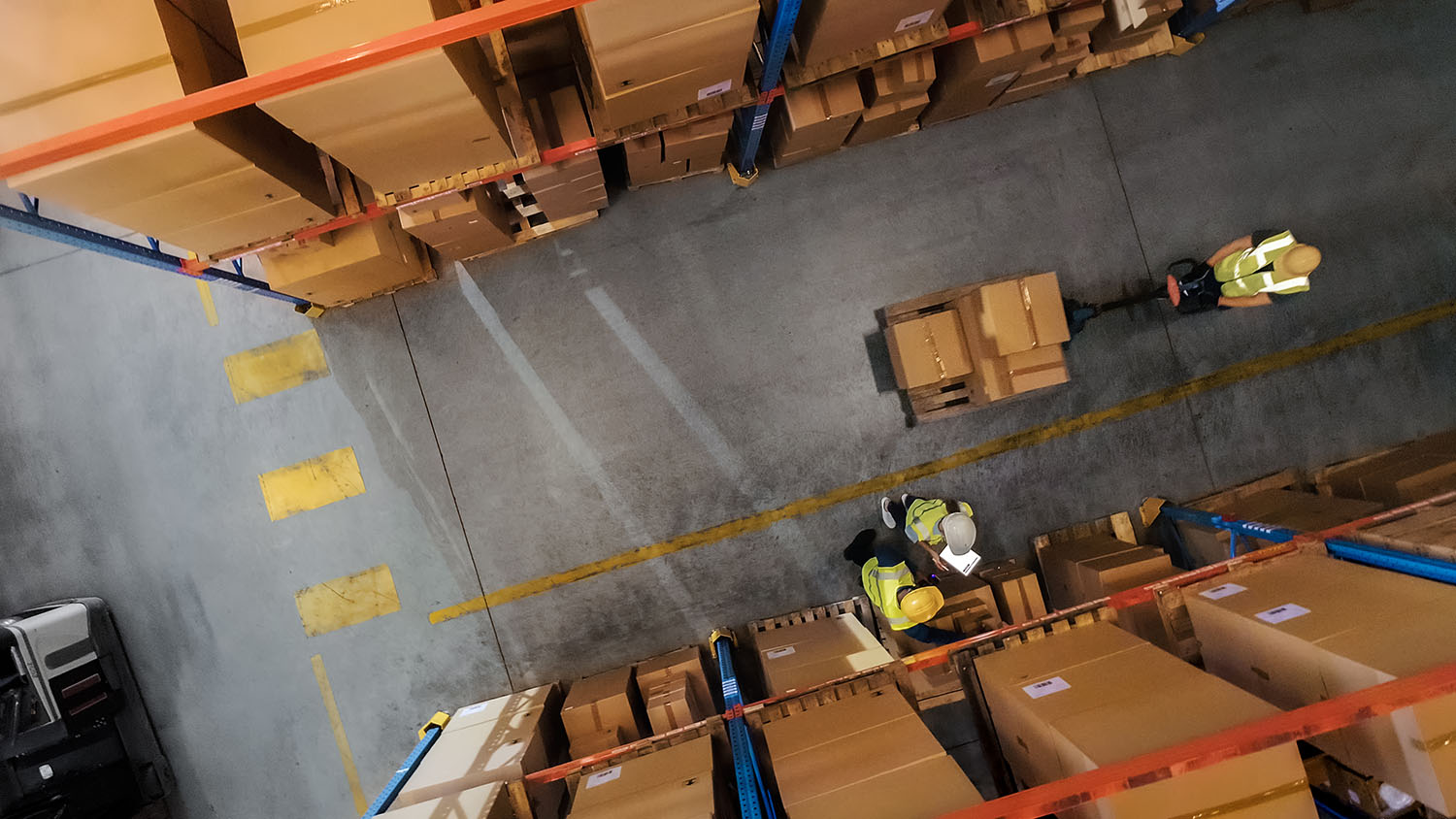Warehouse shipping is the backbone of efficient supply chain management.
When done right, products arrive on time, customers are happy, and your business thrives. But even small shipping mistakes—like mislabeling packages or missing delivery deadlines—can lead to costly errors and erode customer trust.
In fact, according to a survey, 22% of consumers have reported receiving late deliveries, while 21% experienced orders arriving at unexpected times. Mistakes like these aren’t just operational hiccups but direct threats to your bottom line and reputation.
The good news, however, is that these mistakes are entirely avoidable with the right strategies and tools.
In this article, we’ll dive into the most common warehouse shipping mistakes, how they hurt your operations, and what you can do to fix them.
7 Common Warehouse Shipping Mistakes and How to Overcome Them
Mistake #1: Poor Inventory Management
Mislabeled or misplaced inventory is a recipe for disaster. Without accurate inventory records, warehouses risk shipping incorrect items or delaying orders, leading to lost revenue and, for 3PLs, lost clients.
How to overcome this:
- Implement ABC Analysis for Stock Placement: Adopt a systematic approach to inventory organization, like ABC analysis, which categorizes stock based on movement and value. Place high-velocity (A) items in easily accessible, prime picking zones. Mid-priority (B) items can occupy slightly less convenient areas, while slow-moving (C) items are stored further away to save time.
- Optimize Warehouse Layout for Efficiency: Redesign your warehouse layout using proven methodologies, such as cross-docking for faster processing and slotting optimization to group frequently shipped items closer together. This reduces pickers’ travel time and improves overall workflow efficiency.
- Use Real-Time Inventory Tracking with Barcode or RFID Systems: Modern inventory systems, such as barcoding or RFID, provide real-time updates on stock levels and locations. Barcodes are excellent for manual scanning, while RFID can track items automatically and significantly reduce human error. Plus, an integration with a Warehouse Management System (WMS) ensures every item is logged, located, and ready for fulfillment without delays.
- Establish Clear Labeling Standards: To simplify navigation, designate a specific numbering or lettering system for each aisle, shelf, and bin.
Real-life example: Walmart’s distribution centers use AI-powered predictive analytics and real-time inventory tracking to ensure that the products with high demand are always in stock, while minimizing “overstock” of slow-moving items. Their system connects stores, warehouses, and suppliers, enabling rapid restocking based on live data to reduce delays.
Mistake #2: Inefficient Picking and Packing Processes
Outdated systems, unoptimized workflows, and poor staff training can cause bottlenecks in your operational workflow.
How to overcome this:
- Adopt a Pick-to-Light or Voice Picking System: Pick-to-light (PTL) systems use illuminated signals to guide workers to the correct items, and voice-picking systems provide audio instructions to workers. Both these tools reduce reliance on printed lists and minimize human errors.
- Optimize Picking Routes: Using a WMS to design the shortest and most efficient picking routes reduces unnecessary movement. Cluster frequently picked items together and create a logical flow through the warehouse.
- Streamline Packing Stations: Standardize packing workflows by equipping stations with all necessary tools—tape dispensers, label printers, and packing materials—within easy reach.
Real-Life Example: Zappos optimizes its picking and packing processes with a mix of automation and well-trained staff. They use conveyor systems to transport orders to designated packing stations, where workers follow standardized protocols for accuracy and speed.
Mistake #3: Overlooking Shipping Documentation
Incorrect and missing shipping documentation are two of the most overlooked headache creators in warehouse operations.
How to overcome this:
- Digitize Shipping Documentation: Create a centralized document management system to digitize and store invoices, packing slips, and customs forms to reduce errors caused by manual handling. You can even integrate this system with your WMS for quick and hassle-free processing.
- Automate Label Generation: Use shipping software that automatically generates accurate labels based on order data to eliminate manual errors.
- Create a Checklist: Develop a checklist for shipping teams for each order. Include steps like verifying quantities, cross-checking order details, and attaching the proper documentation to maximize consistency.
- Use Customs Automation Tools for International Shipping: If you’re dealing with international clients (and shipments), use tools that automate customs paperwork and flag incomplete documentation before dispatch to avoid delays at borders and ensure compliance with regulations.
Real-Life Example: FedEx uses the Global Trade Manager tool to simplify customs compliance for international orders. This tool provides businesses with pre-filled forms, automated label generation, and real-time tracking of shipments.
Mistake #4: Neglecting Quality Control
If you’re skipping or rushing through quality checks, there’s a high chance you’ll end up with incorrect, damaged, or incomplete shipments.
The consequence? You’ll have higher product returns, higher shipping costs, and, most importantly, unhappy customers.
How to overcome this:
- Set Up Quality Control Stations: Allocate inspection areas in your warehouse. These stations should have trained staff and tools, such as barcode scanners, to verify every item against the order details.
- Implement Automated Verification Systems: Use weight-check systems or scanners to verify package contents automatically.
- Use a Random Sampling Strategy: Regularly inspect a percentage of fulfilled orders to identify recurring picking, packing, or shipping errors. Use this data to address problem areas and improve workflows.
- Conduct Staff Training: Training minimizes the risk of damage during transit. Make sure your employees know how to pack products securely, label them properly, and use protective materials like bubble wrap or reinforced boxes.
Real-Life Example: IKEA incorporates strict quality control measures across its warehouses to maintain its reputation for product reliability. Employees verify each order at multiple checkpoints, from picking to packing, to ensure items are undamaged and meet the customer’s specifications.
Mistake #5: Failing to Optimize Shipping Costs
Shipping costs can quickly eat into profit margins, especially when warehouses rely on inefficient carriers or fail to negotiate competitive rates. High shipping expenses not only hurt profitability but can also deter customers if passed on as inflated delivery charges.
How to overcome this:
- Use Shipping Software for Rate Comparison: Implement shipping software that automatically compares carrier rates based on package size, weight, and destination to make sure you always select the most cost-effective option for each shipment.
- Negotiate Carrier Rates: Build relationships with multiple carriers, and use shipping volumes to negotiate better rates/discounts. Also, consider regional carriers for local deliveries.
- Optimize Packaging: Avoid oversized boxes that increase dimensional weight costs. Instead, invest in packaging materials that fit products snugly. Sustainable packaging solutions, such as recycled materials, can also reduce costs and appeal to environmentally conscious customers.
Real-Life Example: Chewy reduces shipping costs by optimizing packaging and streamlining multi-carrier strategies. Their logistics software evaluates package dimensions and selects the most cost-effective carrier to ensure quick delivery.
Mistake #6: Lack of Real-Time Tracking
Without real-time tracking, warehouses lose visibility over shipments once they leave the facility, which can lead to delayed responses to customer inquiries.
How to overcome this:
- Implement Shipment Tracking Systems: Use a WMS that reveals the location and status of your shipments so you can quickly resolve issues.
- Enable Automated Customer Notifications: Integrate tracking systems with customer communication tools to send automated updates on shipping progress. Real-time notifications, such as “Your order is out for delivery,” help manage customer expectations and reduce “Where’s my order?” inquiries.
- Monitor Delivery Performance Metrics: Track delivery success rates, transit times, and delays using analytics dashboards.
- Adopt GPS-Enabled Fleet Management: GPS tracking tools provide real-time updates on vehicle locations for businesses with their own delivery fleet. This ensures route optimization, faster deliveries, and improved accountability. Win-win-win.
Real-Life Example: UPS sets the benchmark for real-time tracking with its UPS My Choice service, which allows customers to monitor package progress and adjust delivery preferences. UPS’s advanced tracking technology enhances customer satisfaction and enables it to manage delays proactively.
Mistake #7: Relying on Outdated Technology
Warehouses that rely on outdated systems or manual processes struggle to meet modern demands. These inefficiencies lead to increased errors, slower operations, and limited scalability. Worse, obsolete technology makes it nearly impossible to integrate with newer systems, creating data silos and hindering overall productivity.
How to overcome this:
- Invest in a Modern WMS: Upgrade to a Warehouse Management System (WMS) that offers real-time inventory tracking, automated workflows, and data analytics. A modern WMS integrates seamlessly with other tools, such as enterprise resource planning (ERP) systems, to ensure smoother operations.
- Embrace Cloud-Based Technology: Cloud-based platforms allow warehouses to access real-time data from anywhere, facilitate easier upgrades, and enable scalability. They also enhance collaboration by connecting warehouse teams with suppliers and carriers in real-time.
- Monitor and Regularly Update Systems: Outdated software can be a liability. Perform regular system audits to identify which tools need upgrades or replacements. Ensure software updates are applied promptly to maintain security and efficiency.
Real-Life Example: Nike transformed its supply chain by upgrading to a modern technology stack that includes automated inventory tracking and predictive analytics. The company’s advanced systems enable real-time visibility across its global supply chain, helping it reduce delivery times and improve overall efficiency.
Use Da Vinci WMS to Eliminate Warehouse Shipping Mistakes
Shipping errors can derail your operations, but the right tools ensure smooth processes, happy customers, and cost savings.
Da Vinci WMS is built to tackle the most common warehouse challenges head-on:
- Real-Time Inventory Tracking: Monitor stock levels and locations instantly to ensure accurate and timely order fulfillment.
- Advanced Wave Picking and Cart Picking Methods: Optimize picking efficiency by grouping orders intelligently and reducing unnecessary movement.
- Directed Putaway: Maximize storage space and minimize errors with guided inventory placement.
- Cartonization (Intelligent Auto-Packing): Automate packing decisions to save space, lower shipping costs, and speed up operations.
- Cross Docking: Move goods quickly from inbound to outbound shipments to reduce storage costs and enhance delivery speeds.
- Customizable Reporting and Analytics: Gain insights into performance bottlenecks and make data-driven decisions to improve operations continuously.
- Seamless Integration: Connect Da Vinci WMS with your existing tools—ERP, shipping software, and more—for a unified workflow.
With Da Vinci WMS, you’re not just investing in a tool but gaining a partner that’s dedicated to helping your warehouse run flawlessly.
Want to see how Da Vinci WMS can transform your warehouse? Request a demo today to see how it can take your operations to the next level.



